
This tutorial is written to help you to write a plug-out, only few features available for the plug-out are exposed here, the full description of the API this the modeler is given here. A chapter of the reference manual is dedicated to the plug-outs.
Goal
I describe here how to write a plug-out both in C++ and Java sorting the elements in the browser to have in order :
in a package : sub-packages, use case views, class views, component views, deployment views, generalizations, dependencies
in a use case view : sub-use case views, use case diagrams, sequence diagrams, collaboration diagrams, use cases, actors
in a class view : class diagrams, sequence diagrams, collaboration diagrams, state machines, classes
in a component view : components diagrams, components
in a deployment view : deployment diagrams, nodes, artifacts
in a use case : use case diagrams, sequence diagrams, collaboration diagrams, sub-use cases, actors, generalizations, dependencies
in a class (actor) or a state machine : nothing is re-ordered, you have to do it yourself as an exercise :-), don't forget that the order of the members in a class is followed by the code generator.
In a same family the alphabetic order is followed.
Create a plug-out
This plug-out is written from scratch, not from an other one. Start BOUML and load the plug-out named empty part of the distribution. BOUML ask you immediately to save it, protecting the definition of empty, of course I name it sort :

As you can see the project contains two main packages, the first one defines system base classes and associated artifacts supporting the API with the modeler, these classes are read-only. The second package contains predefined user classes and associated artifacts, generally a user class inherits a system class.
The classes mainly correspond to the browser elements and the settings, for instance a package is managed by the user class UmlPackage inheriting the system class UmlBasePackage etc ..., for instance :
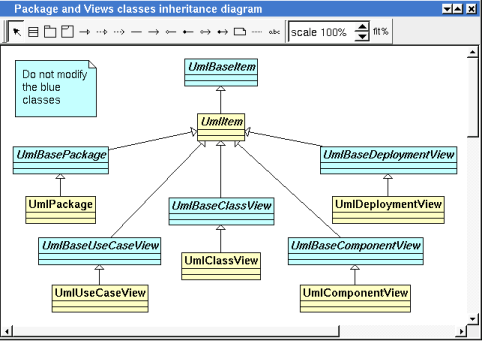
Execution beginning
As usual the execution starts in the main, and a plug-out is always applied on a browser element. A default definition is given in the artifact main defined in API USER Deployment view :
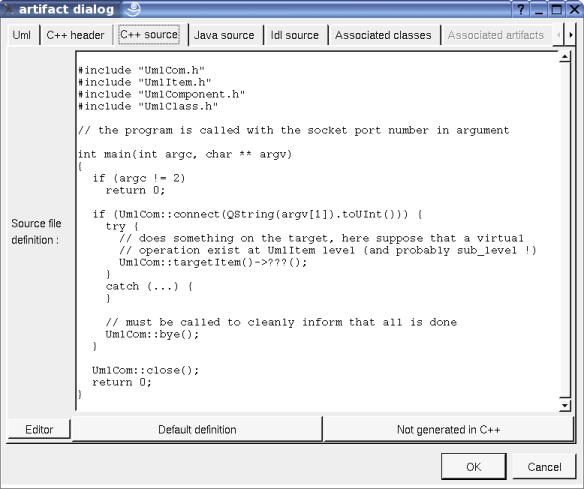
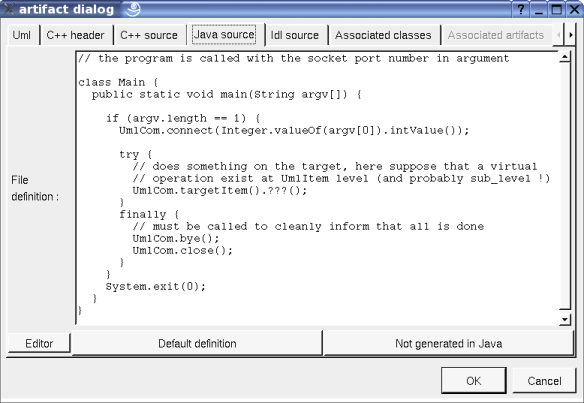
Our goal is to sort all the children of the browser element on which the plug-out is applied, this element is get using the operation targetItem defined on UmlCom and returning an UmlItem which is the base type of all the browser elements, this operation is already called in the default definitions of the main.
The plug-out only have interest when it is applied on a package, any view or on a use case, and it will be configured in BOUML for these kinds of elements, but because he configuration may be wrong I have to protect the other cases, so I decide to define the operation sort on UmlItem indicating the error, and to refine sort on UmlPackage, UmlUseCaseView, UmlClassView, UmlComponentView, UmlDeploymentView and UmlUseCase. The main just have to apply sort on the result of targetItem :
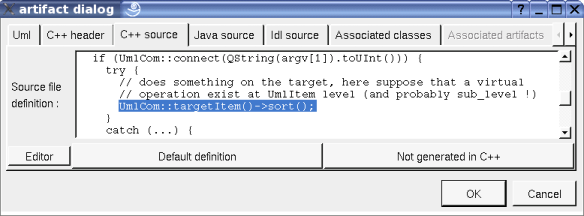

Error on wrong element
Now I define the operation sort on UmlItem, to indicate the error to the user I use the operation message defined on UmlCom, this message will be written in the trace window and must be a valid HTML block. sort return nothing (void) and doesn't have parameters, in C++ it is obviously virtual to refine it.
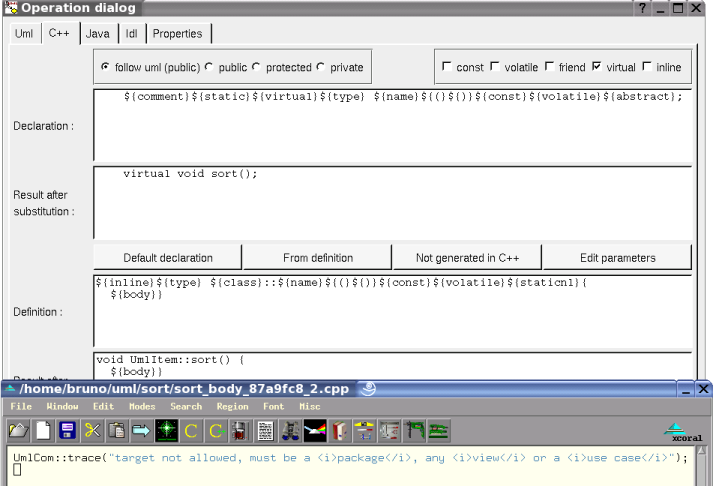
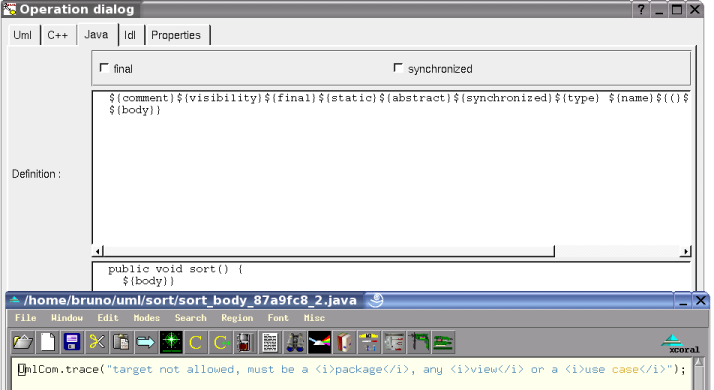
In C++ the artifact must be modified to add #include “UmlCom.h” in the source, to find quickly the artifact use the class menu entry select associated artifact, to come back use the artifact menu entry select the associated class.
Sort the children
For all the right targets the same thing must be done : to sort the children, I decide this is done by the operation sortChildren defined on UmlItem, thanks to that I just have to call sortChildren in the operation sort defined on UmlPackage, UmlUseCaseView, UmlClassView, UmlComponentView, UmlDeploymentView and UmlUseCase. So I define sort on UmlPackage just calling sortChildren and to quickly have the same definition for the other classes I mark (mouse left click with the control key down) sort on UmlPackage and I use the menu entry duplicate marked into on UmlUseCaseView etc ...
To sort I have two possibilities : to write the algorithm myself or to use a library, even implementing quicksort is trivial I choose the second way because this is more interesting in this tutorial. In Java a sort operation is defined on the arrays of elements implementing Comparable, in C++ we can use the sort operation defined on the QVector defining a sub class defining compareItems. In the two cases the sort in first done in the plug-out memory then the browser elements will be moved accordingly.
Sort in Java
Because we sort instances of several classes I decide to implement Comparable by UmlItem, because only one class and operation must be defined I don't use Java catalog and I do all by hand :
I create a package named aux under the project
in aux I create a class view named aux
in this class view I create the class Comparable with the stereotype interface, I say it is external in Java to avoid code generation warning, and even this is not mandatory I define the abstract operation compareTo.
I create a diagram to allow UmlItem to realize Comparable, I say the realization in not implemented in C++
I define compareTo on UmlItem, for instance using add inherited operation, I say the operation is not implemented in C++
the comparison must first take into account the class of an element then may be its name, for that I define the operation orderWeight returning an int valuing 0 for UmllItem (the value is not relevant, this operation will not be called)
the name of a browser element is returned by the operation name, so the definition of int compareTo(Object o) is :

Sort in C++/Qt
I say orderWeight is defined virtual in C++ on UmlItem and it returns also 0 in C++
in the class view aux I create the parametrized class QVector, I say it is not implemented in Java, in C++ this is a external class having this definition :
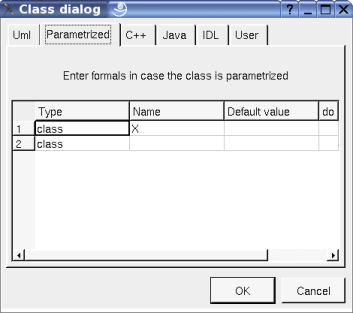
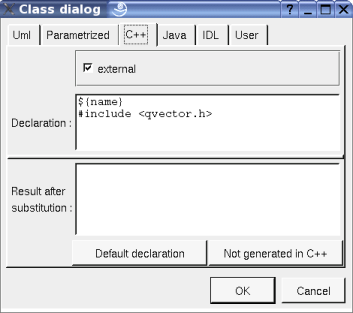
even it is not mandatory on it I define the operation int compareItems(QCollection::Item d1, Qcollection::Item d2)
I define the class VectorOfUmlItem inheriting QVector, I say this class must not be defined in Java, in C++ its definition is (the inheritance must be defined before the edition of the class to set the actual) :

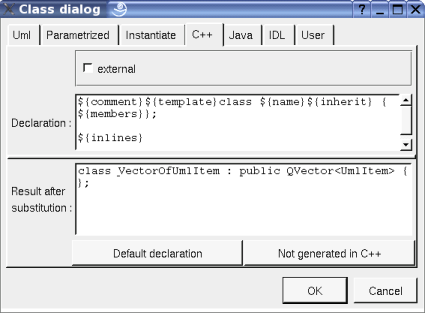
on VectorOfUmlItem I define compareItems like this :
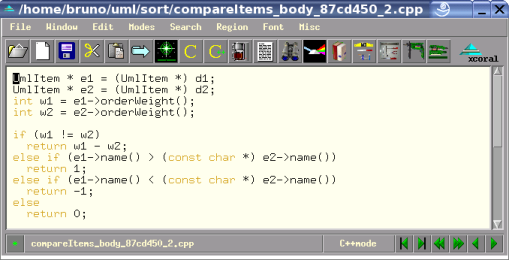
To not have to create an artifact for it I edit the artifact UmlItem and I add VectorOfUmlItem in the associated class list
Finally :

Operation orderWeight
Now we have to define orderWeight, to have the desired order the returned value may be :
UmlPackage (package) : 1
UmlUseCaseView (use case view) : 2
UmlClassView (class view) : 3
UmlComponentView (component view ): 4
UmlDeploymentView (deployment view ): 5
UmlUseCaseDiagram (use case diagram), UmlClassDiagram (class diagram), UmlComponentDiagram (components diagram), UmlDeploymentDiagram (deployment diagram) : 6
UmlSequenceDiagram (sequence diagram) : 7
UmlCollaborationDiagram (collaboration diagram) : 8
UmlUseCase (use case), UmlState (state machine), UmlComponent (component), UmlNode (node) : 9
UmlClass (class), UmlArtifact (artifact) : 10
UmlRelation and UmlNcRelation of kind generalization (relationKind() valuing aGeneralisation) : 11
UmlRelation and UmlNcRelation of kind dependency (relationKind() valuing aDependency) : 12
I define the operations on the right class with the right returned value, of course using the duplication on the operation.
sortChildren
The operation children() defined on UmlBaseItem returns a vector of UmlItems.
To change the order in the browser the operation moveAfter is defined on UmlBaseItem. It is only possible to change the order, not to move an element from its parent into an other one. If the parameter is null the element is moved to be the first child of its parent, else it is moved to be placed after the parameter (of course the parameter and the element must have the same parent else nothing is done).
The definition of sortChildren in C++ is :
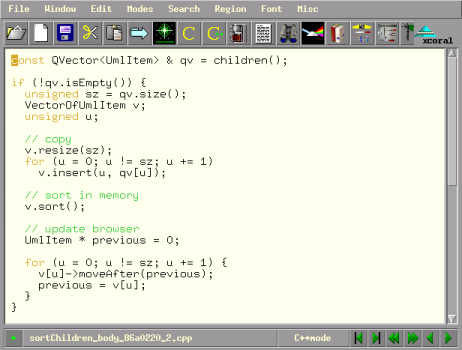
The definition of sortChildren in Java is :
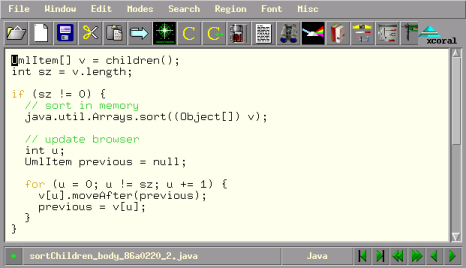
Generate code
To generate the code we have to set where the sources must be placed, edit the generation settings for instance to have :
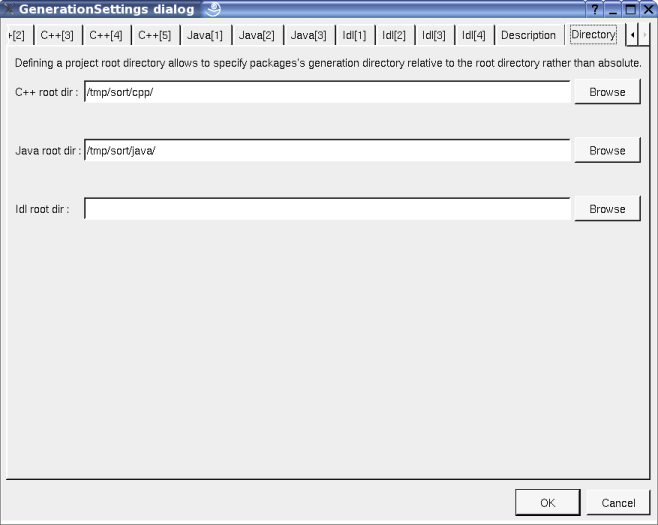
Ask for the C++ and/or Java generation using the menu Tools or through the menu of the project (all must be generated)
C++ compilation
To compile the C++ definition under Linux or MacOS X we need a Makefile, for that the better is to produce the .pro file applying the plug-out genpro on the artifact named executable, because sort doesn't use data specific to C++ Java or Idl we can remove the defines (the executable will be smaller), the name of the executable is browsersort :
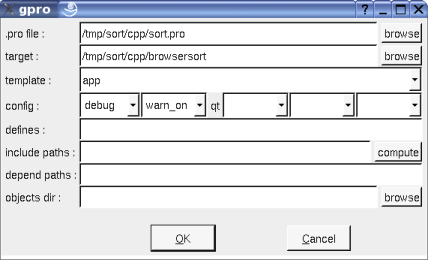
Use qmake to produce the Makefile, then make to compile.
Java compilation
To compile the java files, go in the directory where the files are and do javac *.java (don't compile file by file because some files associated to the API contain several classes).
All is done, don't forget to save your project :-)
Use the plug-out
To use the plug-out in any project you must declare it, call the Tools settings dialog in the menu Tools, here I declare the C++ and Java implementation :
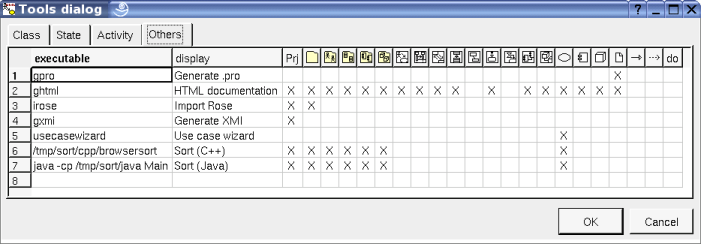
Now the sub-menu tool on the project, a package, all the views and a use case propose to sort.
Easy isn't it ? Do not hesitate to write your plug-outs, look at the already defined ones to have examples !
Happy modeling !
Bruno Pagès